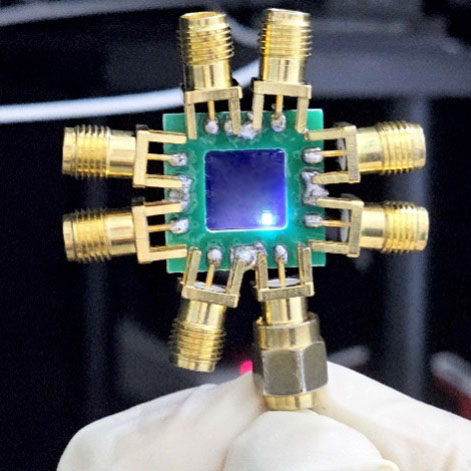| May 28, 2024 |
Multifunctional three-terminal diode revolutionizes optoelectronic systems
(Nanowerk News) Researcher at iGaN Lab, University of Science and Technology of China, have developed a multifunctional three-terminal diode that functions both as a light emitter and a detector. This innovative device can operate both as a light emitter and a photodetector, offering unprecedented reconfigurable optoelectronic capabilities, says USTC professor Haiding Sun.
|
|
The research has been published in Nature Electronics ("A three-terminal light emitting and detecting diode") and also featured as cover image of April 2024 issue.
|
|
Modern electronic systems heavily rely on two-terminal devices such as light-emitting diodes (LEDs), Schottky diodes, and photodetectors. These devices, while essential, often face limitations in functionality and performance due to their inherent two-terminal architecture.
|
|
Addressing this challenge, researchers from the iGaN Lab, University of Science and Technology of China have introduced a novel three-terminal gallium nitride (GaN)-based diode, which significantly enhances the versatility and efficiency of optoelectronic devices.
|
 |
| The gallium nitride-based diode that comprises both light-emitting and detecting functionalities. (Image: M. H. Memon)
|
|
The research details the development and capabilities of this three-terminal diode. The device integrates a traditional two-terminal GaN-based p‒n diode with an additional third terminal (Tt), composed of a metal/Al2O3 dielectric layer directly deposited on the p-layer. This innovative design allows the diode to function as both a light emitter and a photodetector, with tunable performance characteristics.
|
|
The three-terminal diode (TTD) can switch between emitting light and detecting optical signals. As an emitter, the light intensity is adjustable, and the modulation bandwidth is increased from 160 MHz to 263 MHz. As a photodetector, the TTD can configure reconfigurable optoelectronic logic gates, including NAND and NOR gates, by modifying the applied voltage.
|
|
The device's versatility extends to its application in optical wireless communication (OWC) systems. Implementing the three-terminal diode as a transmitter in an OWC setup has shown a dramatic enhancement in communication bandwidth, surpassing conventional two-terminal LED systems. This improvement is primarily due to the reduction in signal-line losses, thanks to the built-in bias tee functionality.
|
|
Furthermore, the researchers demonstrated the potential of the three-terminal diode in optoelectronic logic gates (OELGs). By configuring the working voltage of the p‒n diode, the device can switch between light-emitting and photodetecting modes, enabling multifunctional operations within a single platform. This flexibility paves the way for advanced optoelectronic computing and data processing applications.
|
|
"This groundbreaking work represents a significant leap forward in the development of multifunctional integrated optoelectronic systems. The three-terminal diode's ability to operate as both an emitter and a detector, combined with its reconfigurable logic gate functionality, positions it as a promising candidate for future compact and efficient optoelectronic devices,"" says Prof. Haiding Sun.
|

